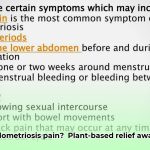Is sour well water corroding your pipes and affecting the taste? This comprehensive guide offers a clear and actionable path to cleaner, better-tasting water by selecting and implementing the ideal whole-house acid neutralizer system. We’ll delve into comparative analyses of leading systems, evaluate their performance across diverse acidity levels, and provide step-by-step guidance for informed decision-making.
Addressing Well Water pH Imbalance with Effective Water Filtration Systems
Dealing with acidic well water presents challenges for plumbing infrastructure and household appliances. A whole-house acid neutralizer, working similarly to a water softener, offers a reliable solution. However, choosing the right system for your specific needs requires careful consideration. Let’s simplify this process and explore key factors for optimal selection.
Evaluating pH and Flow Rate: Tailoring Your Water Quality Solution
Prior to purchasing an acid neutralizer, it’s crucial to determine your water’s pH level using a readily available test kit. For mildly acidic water (pH 6.0-6.5), a calcite-based system is often sufficient. However, lower pH levels (5.0-5.5 or lower) necessitate a more potent solution, typically involving a blend of calcite and Corosex (magnesium oxide).
Water usage patterns are equally important. Larger households demand higher flow rates (measured in gallons per minute, or GPM) to maintain adequate water pressure. Review your water meter or consult a plumber to accurately assess your household’s daily water consumption. Manufacturers specify GPM ranges for their systems, ensuring compatibility with your needs. Do you know your peak water consumption?
Optimizing Performance with Advanced Features: Electronic Control Valves and Beyond
Contemporary acid neutralizers offer a range of features beyond basic acidity neutralization capabilities. Backwashing functionalities provide automated self-cleaning cycles, prolonging the lifespan of the unit. Programmable controls allow for customized settings, optimizing performance based on specific needs. Bluetooth connectivity enables convenient monitoring and adjustments via a smartphone app. Evaluate the added value of these features in relation to their cost.
Comparing Acid Neutralizer Technologies: Finding the Right Fit with Water Softening Considerations
A comparative analysis of available technologies is essential for informed decision-making.
| Technology | Pros | Cons | Best Suited For |
|---|---|---|---|
| Calcite-based systems | Budget-friendly; effective for mildly acidic water; relatively simple installation; utilizes a naturally occurring mineral. | Less effective with highly acidic water; may require more frequent media replenishment; can increase water hardness slightly. | Homes with mildly acidic water (pH 6.0-6.5); lower water usage; those seeking a cost-effective and straightforward solution. |
| Corosex-calcite blend | Handles a wider pH range; typically longer lifespan; more aggressive pH correction; effective for a broader spectrum of water conditions. | Higher upfront cost; may require adjustments to water hardness; can be more complex to manage than calcite-only systems. | Homes with more acidic water (pH 5.0-5.5 or lower); high water usage; households requiring robust and reliable performance. |
| Chemical Injection Systems (Soda Ash) | Highly effective for severely acidic water (pH < 6.0); precise pH control; suitable for large-scale applications. | Requires more complex installation and maintenance; needs careful monitoring and adjustments; potential for chemical overdosing. | Industrial applications; situations with extremely acidic water where precise pH control is crucial. |
| Backwashing systems | Automatic cleaning; extends media life; reduces manual maintenance; improves system efficiency. | Higher initial cost; requires proper installation to prevent leaks and ensure optimal functionality; demands more space. | Households prioritizing convenience and minimal maintenance; individuals seeking long-term performance and reliability. |
Professional Installation and Maintenance: Ensuring Optimal Performance
While do-it-yourself installation may be an option for some simpler systems, professional installation is generally recommended to ensure proper setup and functionality. These systems involve plumbing and electrical connections, and improper installation can lead to leaks, reduced efficiency, and potential safety hazards. Regular maintenance is also crucial for long-term performance.
Addressing Potential Problems: Water Pressure, Mineral Buildup, and More
Let’s proactively address potential issues and mitigation strategies:
| Risk Category | Likelihood | Severity | Mitigation |
|---|---|---|---|
| Reduced Water Pressure | Moderate | Low | Select a system with a flow rate that adequately meets your household’s peak water demand; consider installing a pressure booster pump if needed. |
| Leaks | Low | High | Professional installation is strongly recommended; conduct regular inspections to identify and address even minor leaks promptly; use high-quality plumbing components. |
| Media Clogging/Buildup | Moderate | Moderate | Implement a regular backwashing schedule for media-based systems; consider using a pre-filter to remove sediment and particulate matter; periodically inspect and clean the system components. |
| High Upfront Cost | Low | Low | Obtain quotes from multiple vendors; explore financing options or rebates; factor in long-term cost savings from improved water quality and reduced appliance damage. |
Long-Term Planning: Adaptability and Sustainability Considerations
Water pH levels can fluctuate over time, necessitating periodic monitoring. Significant changes in acidity may require system adjustments or upgrades. Consider the environmental impact of the media used in the system and choose options that align with your sustainability goals. Is your chosen system adaptable to varying pH levels, or will a complete replacement be necessary in the future?
Selecting the right acid neutralizer is an investment in protecting your plumbing, appliances, and overall home environment. By thoroughly understanding your water’s characteristics, carefully evaluating available technologies, and considering potential long-term implications, you can make an informed decision that ensures reliable performance and lasting satisfaction.
Comprehensive Guide to Selecting the Best Well Water pH Neutralizer for Low pH and Optimal Water Quality Testing
Key Takeaways:
- Acidic well water (pH below 7) causes corrosion, damages plumbing and appliances, and can potentially affect health due to the leeching of metals.
- Calcite-based systems, calcite/Corosex blends, and chemical feed pumps are common solutions, each suited for different levels of acidity.
- System selection depends on factors such as initial pH, water usage, budget constraints, and desired level of maintenance.
- Regular maintenance, which includes media replacement or chemical refills, is essential for optimal performance and longevity.
- Professional installation is highly recommended to ensure proper setup and compliance with local regulations.
Understanding the Root of the Problem: Why Acid Neutralization is Essential
Acidic well water is inherently corrosive, gradually eroding pipes, fixtures, and appliances, resulting in costly repairs and premature replacements. Moreover, it can leach harmful metals, such as lead and copper, from plumbing components into drinking water, potentially posing significant health risks to occupants.
A Comparative Overview of Neutralization Systems: Choosing the Right Method
Various systems are available for effectively neutralizing acidic well water. Let’s conduct a detailed examination of some of the most popular options:
1. Calcite-Only Systems:
- Mechanism: These systems utilize calcite media, which is a natural form of calcium carbonate, to gradually raise the pH of the water as it flows through the system. The calcite reacts with the acids in the water, effectively neutralizing them.
- Pros: Relatively inexpensive; simple to install and maintain; utilizes a naturally occurring and readily available mineral; suitable for mildly acidic water.
- Cons: Less effective for extremely low pH levels (below 6.5); may not be suitable for very high water flow rates; can slightly increase water hardness.
2. Calcite/Corosex Blend Systems:
- Mechanism: This approach combines calcite media with Corosex, which is a magnesium oxide-based media. The blend provides a more aggressive and effective pH correction compared to calcite alone.
- Pros: Effective across a wider range of pH levels, including moderately acidic water; provides more robust and reliable neutralization compared to calcite-only systems; often results in improved water taste and clarity.
- Cons: Can increase water hardness to a greater extent than calcite-only systems; higher initial cost; may require more frequent monitoring and adjustments.
3. Chemical Feed Pump Systems (Soda Ash):
- Mechanism: These systems involve the controlled injection of a specific amount of soda ash (sodium carbonate) directly into the water stream to raise the pH.
- Pros: Highly effective for severely acidic water (pH < 6); allows for precise pH control; can be used in a wide range of applications, including industrial settings.
- Cons: Requires more precise control and regular maintenance; can be more expensive than media-based systems; complex installation; poses a higher risk of improper usage or chemical overdosing.
Step-by-Step Guide to System Selection for Improved Water Conditioning
- Comprehensive Water Testing: Obtain a detailed water quality report from a certified laboratory, specifying pH levels, mineral content, and any other relevant parameters.
- Needs Assessment: Carefully consider your household’s water usage patterns, the severity of the low pH issue, your budgetary limitations, and your desired level of maintenance.
- System Selection: Based on the water test results and your specific needs, select the most appropriate system. A calcite-only system
- Plant-based Diet Colitis Remission: Success Stories - December 18, 2025
- Plant Based Diet Breast Cancer: Research-Based Benefits - December 16, 2025
- Plant-Based Diet Ulcerative Colitis Remission: Proven Benefits - December 15, 2025










